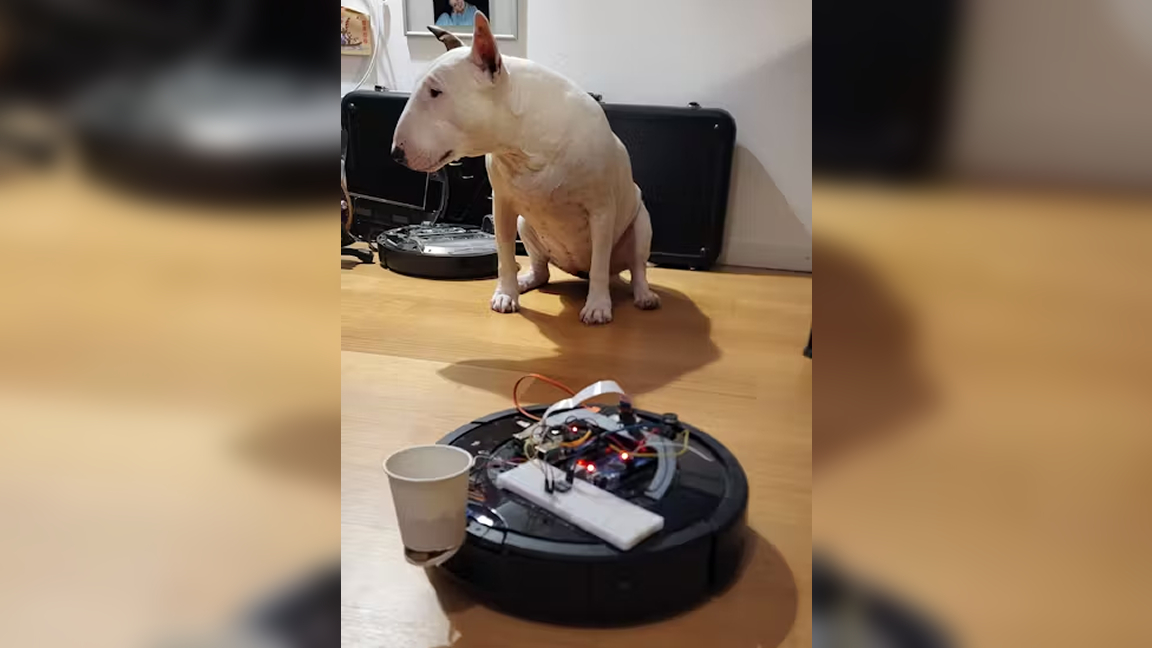When it comes to revitalizing old hardware, there’s no board we enjoy seeing thrown into the mix quite like the Raspberry Pi. This tiny SBC has a lot of flexibility and it’s always fun to see what imaginative ways makers transform their experience with a bit of creativity and ingenuity. Today we have a wonderful example of this phenomenon from maker and developer Joaquim Silveira. Silveira has transformed an old Roomba vacuum into a really cool Raspberry Pi-powered robot.
The idea for this project came to Silveira after purchasing a spare Roomba to salvage repair parts from. With an extra vacuum bot sitting around, it didn’t take long before he decided to cram an old Raspberry Pi inside and make it do fun stuff. In this case, turning the Roomba into an AI-driven robot that automatically feeds his dog.
According to Silveira, a guiding principle in this project build was to use as much salvageable hardware as he could. This meant avoiding the purchase of new hardware and using components from projects past. In the end, the project showcases some wonderful ingenuity that can only be found in the constraints of limitations.
The main board chosen to drive this project is a Raspberry Pi 4. It’s powered by an external battery pack and works alongside a 5V Arduino Mega which works as a level shifter. The Roomba is an older pre-used model that was purchased online. A camera module is used to capture images in real-time so the Pi can detect when his dog is nearby. Should the dog be detected, a servo triggers and dumps treats from an old paper cup.
Silveira has dubbed the project space vacuum and if that name confuses you, it will make much more sense when you realize what software he’s using to drive the unit. Instead of rigging something together with Python on Raspberry Pi OS, he opted to use NASA’s jet propulsion lab flight software known as Fprime. This provides a handy GUI that lets Silveira operate the drone and keep an eye on its stats. The Pi uses Tensorflow to handle the AI image recognition. You can find all of the source code available on GitHub.
To get a closer look at the inner workings of this Raspberry Pi project, head over to the official project page shared to Hackster.
